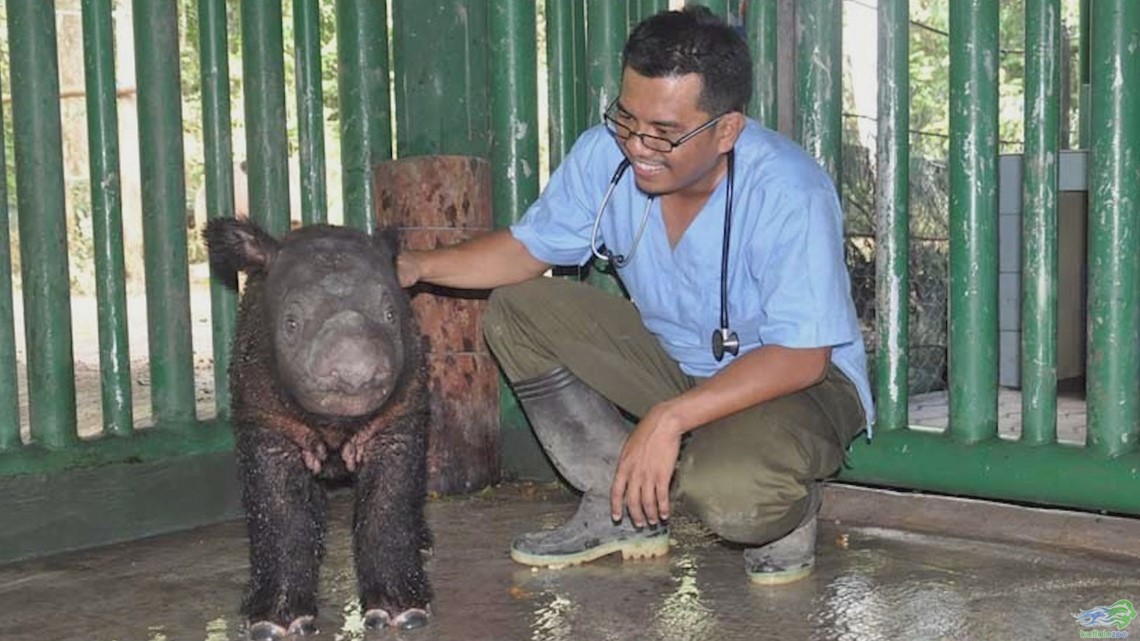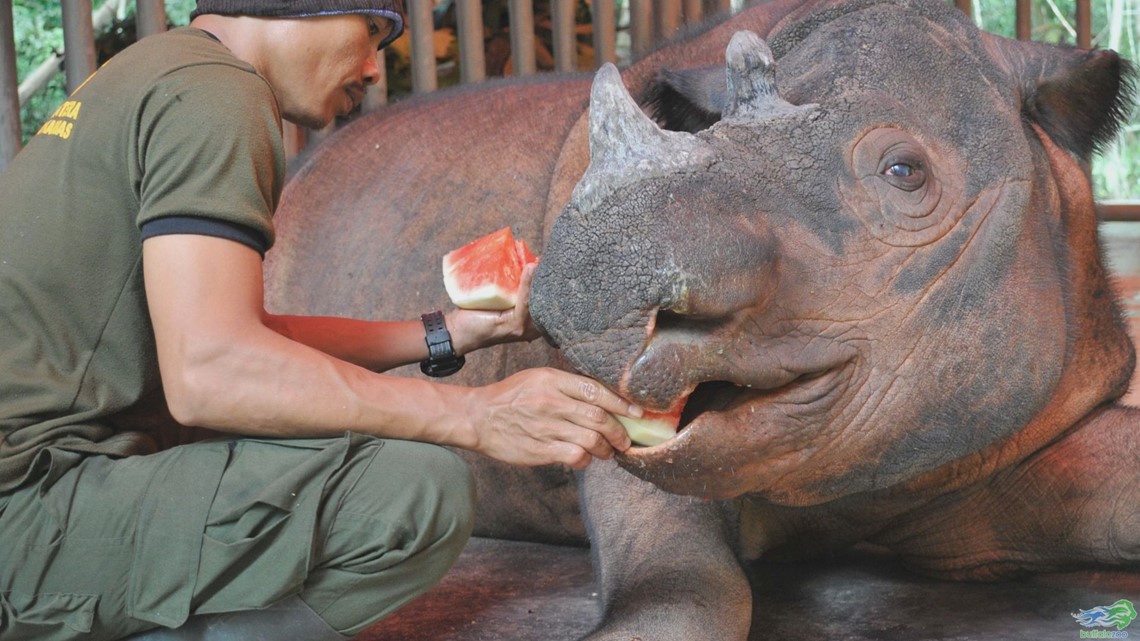BUFFALO, N.Y. — The role of zoos has taken on critical importance in both preservation and conservation of increasingly threatened species such as the rhinoceros.
The Buffalo Zoo has been very active in working with rhinos. Its two adult rhinos, Tashi and George, are helping to increase the global population of greater-one horned rhinos. Tashi, a 23 year old female, recently gave birth to a male calf named Mohan. The zoo tried to breed George and Tashi, but it didn't take, so they had to resort to artificial insemination.
It's a complex process guided by the American Species Survival Plan, which was developed in 1981 by the American Association of Zoos and Aquariums. The SSP program was created to help ensure the survival of selected species in zoos and aquariums, most of which are threatened or endangered in the wild.
"We look at the genetics of each individual animal, and then match them best — who matches best with who — to know where to send them with, who to breed them with, how many offspring can they have, are they over represented, are they under represented," said Buffalo Zoo Assistant Curator Joe Hauser. "So there's a lot of factors to the genetic portion, and where the animals go."
Hauser says that Tashi has given birth four times, two naturally and two artificially. Young Mohan's birth went off smoothly, as anxious zoo keepers watched from a distance.
"We stayed out of the barn when she is giving birth, we wanted to make sure she's paying attention to giving birth, and not trying to disturb that," he said. "So we watched her on the camera and your heart's pounding the whole time, and fortunately with Mohan, he hit the ground and was kicking right away."
In a few years, Mohan will hopefully father more rhinos. And though unsuccessful in breeding with Tashi this time, George is just entering his prime breeding years. His genes will also contribute to the overall success of his species.
"George is actually the third most genetically valuable male in North America, so he's very valuable," Hauser said.


The zoo's efforts to help these ancient mammals doesn't stop with breeding. Over the summer Hauser and the zoo raised $14,000 to donate to the Sumatran Rhino Rescue, an Indonesian organization dedicated to saving the Sumatran rhino, the most critically endangered large mammal on earth. There are less than eighty left in existence.
"The government of Indonesia — along with International Rhino Foundation and other NGO's — they recently developed the Sumatran Rhino Rescue, which is a plan to be able to capture the remaining Sumatran Rhinos that are out in the wild, bring them into human care, put them in managed breeding situations, increase their numbers, and then re-release them back out into the wild," Hauser said.


It will take the entire global community to ensure the future of the rhino, and the zoo is rightfully proud of its contribution to the cause.
"And I hope that we can pass that along to our zoo guests, and the zoo community, and the Western New York community, and all across the United States, we can do this, and you can take a lot of pride in knowing you played a part in saving a species," Hauser said.
To help support the Buffalo Zoo's efforts, click here.
To learn more about Sumatran Rhino Rescue, click here.
RELATED: 2 The Outdoors: Leave No Trace

